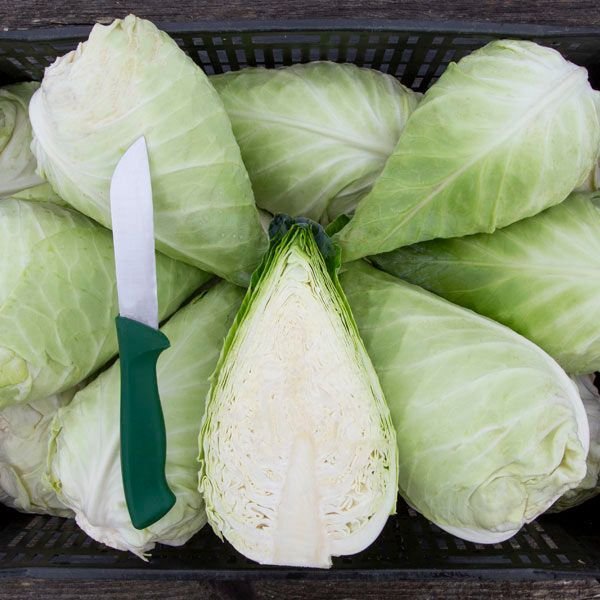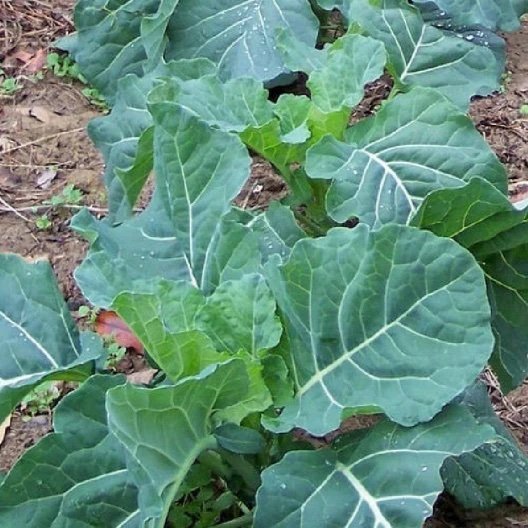Not Your Usual Brassicas
Brassica family members include such familiar favorites such as broccoli, cauliflower, cabbage, kale, and Brussels sprouts. Aside from the usual varieties, however, there are many lesser known types that are easy to grow from seed.
All brassicas thrive in cool weather. Except for the few that can be direct sown—turnips and bok choy are two—start seeds 4 to 6 weeks before the time is right for planting them out in spring, or in mid to late-summer for a fall crop. Ideal growing temperatures for most brassicas is 65 to 80°F (18 to 26°C).
Here are a few you might try this gardening season.
New Takes On Old Favorites
Kale is nutritious, easy to grow, and very diverse. Deep green Lacinato, vigorous Red Russian, and curled leaf kales are garden workhorses. Look around and you’ll also find dwarf kales that are well suited to containers, and exceptionally tender Siberian kale varieties. Another less known but no less delicious and nutritious variety is Portugese kale (pictured at right), a main ingredient in caldo verde. The 12 to 18 inch tall heads of paddle-shaped, deep blue-green leaves can be harvested over a long season. Kale sprouts (pictured on left), often sold as kalettes, were developed by crossing Brussels sprouts and kale. Described as “kale flowers” they can be roasted or sautéed, or eaten fresh.
Turnips have been around for thousands of years, and for much of that time they were generally looked down upon. Today we can plant traditional turnips, but we can also grow smooth, sweet salad turnips that are no larger than ping-pong balls and pretty enough for a gourmet meal. Turnip greens have gained new respect also for their taste—tender and mild with peppery notes—as well as for their health benefits. If you're looking to grow nutritious braising greens, choose a turnip variety that is bred specifically for greens rather than roots. All types of turnips can be sown directly in the soil in spring.
Bok Choy, also known as Pak choi, is one of the easiest members of the brassica clan to grow. Its leaves and stems are nutrient dense and mild tasting. Some varieties mature in as little as 45 days from a direct sowing, making bok choy a prime candidate for succession cropping or fall planting. Baby bok choy varieties make excellent spring or fall container plants.
Broccoli is generally grown for its large tasty heads. Once the heads are harvested, the stem sends out tasty side shoots for a time. In contrast, sprouting broccoli is grown specifically for its tender stems and florets, which can be harvested over a long period. Broccoli rabe, also known as rapini, looks similar to sprouting broccoli but is more closely related to turnips and, like turnips, has a mildly bitter flavor. Because broccoli rabe matures much more quickly than broccoli, seeds can be sown directly in the garden. To confuse matters further there's a hybrid of sprouting broccoli and Chinese kale, or Gai Lan, known as Aspabroc. Sold in supermarkets as Broccolini®, it is similar in appearance to broccoli rabe, but its flavor is sweet and mild. All of the above are cool season growers.
Cabbage heads are traditionally big, round, and dense, weighing in at 2 to 3 pounds or more—that's a lot of cabbage for today's smaller families. Compact coneheads and early maturing baby cabbages grow to about half that size. Better suited to smaller gardens, they mature in about 2 months, vs. the 100 days it can take some larger cabbages to mature. Start the seeds indoors about 4 to 6 weeks before the last expected frost to give them a chance to grow before the weather turns hot.
Collard greens are popular around the globe, though we tend to think of them as a southern vegetable (South Carolina designated collards as its state vegetable!). They thrive in the cool weather of spring and fall. Their ideal growing temperature range is 55 to 75°F (13 to 24°C), but they can tolerate temperatures as low as 26°F (-3.3°C) for short periods. It's said that the leaves become sweeter when nipped by frost. Aside from being an excellent soup green, collards combine well with potatoes, garlic, and onions to make a comforting winter hash. For a fall harvest, plant seeds about 2 months before the date of the first expected frost, or later if you live in a mild-winter climate.







